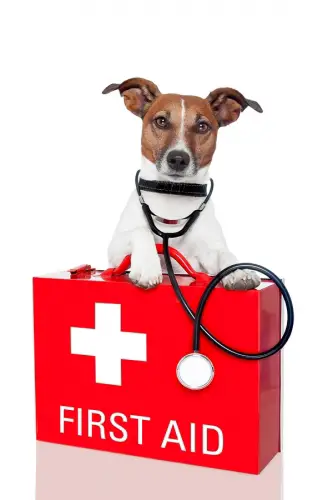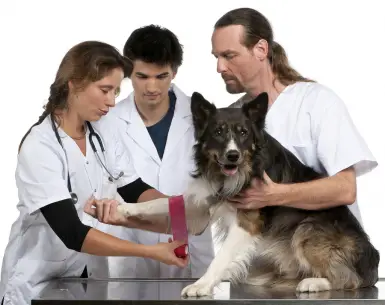
Browse Categories
- Dog Boot Camps
- Test
- Test
- Dogs Please Clicker Training
- Pet Insurance Comparison
- Exercising Pets With An E Scooter
- 10 Reasons Why Guinea Pigs Are Wholesome Little Pets
- Why You Should Use a Shed to House Your Pet
- How can Dog Owners Keep their Carpets Clean?
- How to Keep Your House in Order With Large Pets
- What is the Best Way to Feed a Puppy to Keep Them Healthy
- Pets Please
- All Animals and Pets
- Dogs and Puppies
- Cats and Kittens
- Birds
- Fish
- Reptiles
- All Other Small Pets
- Claws 'N' Paws Events
- PetsInLimbo/Greys4PetsInc.
News Search
PetsPlease News and Advice
Be Prepared: First Aid for Your Pet
A first aid for pets is not always the same for every animal but the most common occurrence in this situation is an injured cat or a dog. Here’s a rough walk through of dealing with an injured feline or canine.
- Check if the animal is in an approachable state. If it’s gnarling with its eyes in a wide stare, don’t go near it yet. If its head is bowed down, whimpering or is obviously in a receiving mood, comfort it by first touching the side under the jaw. Let your hand go around its neck, scratching it for reassurance.
- For the animal that’s hurt and angry, carefully place a muzzle around the mouth. Remember to relax so as not to agitate the animal further. This is a tricky part but it can be done with patience. When you’ve placed the muzzle securely on the now helpless dog or cat, you can do the next step of administering treatment.
- When planning to take a dog or a cat to the nearest Veterinary Surgery, it’s best to transport the animal while it lies on its side. You may slip your arms under it and carry a submissive dog or cat like a human baby only with its back towards you and its legs sticking forward. Another way is to place the pet in a stretcher-like method, using a small blanket, a rug, a big box or rubber mat.

For less intense situations such as shallow wounds and scratches, they still need to be taken to the attention of a Vet. If you have a first aid kit with you, it can come in handy if the animal can’t be taken to the vet immediately. Then, you can place a call to your vet who can guide you on how to do the first aid treatment. Meanwhile here are what every pet owner should have in their animal’s first aid kit.
- Adhesive tape to secure bandages.
- Gauze bandages to protect the wound further and to stop the animal from licking it.
- Muzzle for restraining an aggressive dog.
- 3% hydrogen peroxide to clean out blood.
- Bottled water to wash the wound.
- Hydrocortisone cream for skin redness and swelling
- Popsicle sticks to act as splint or support for a fractured bone
- Rectal thermometer, tweezers and a box of cotton


